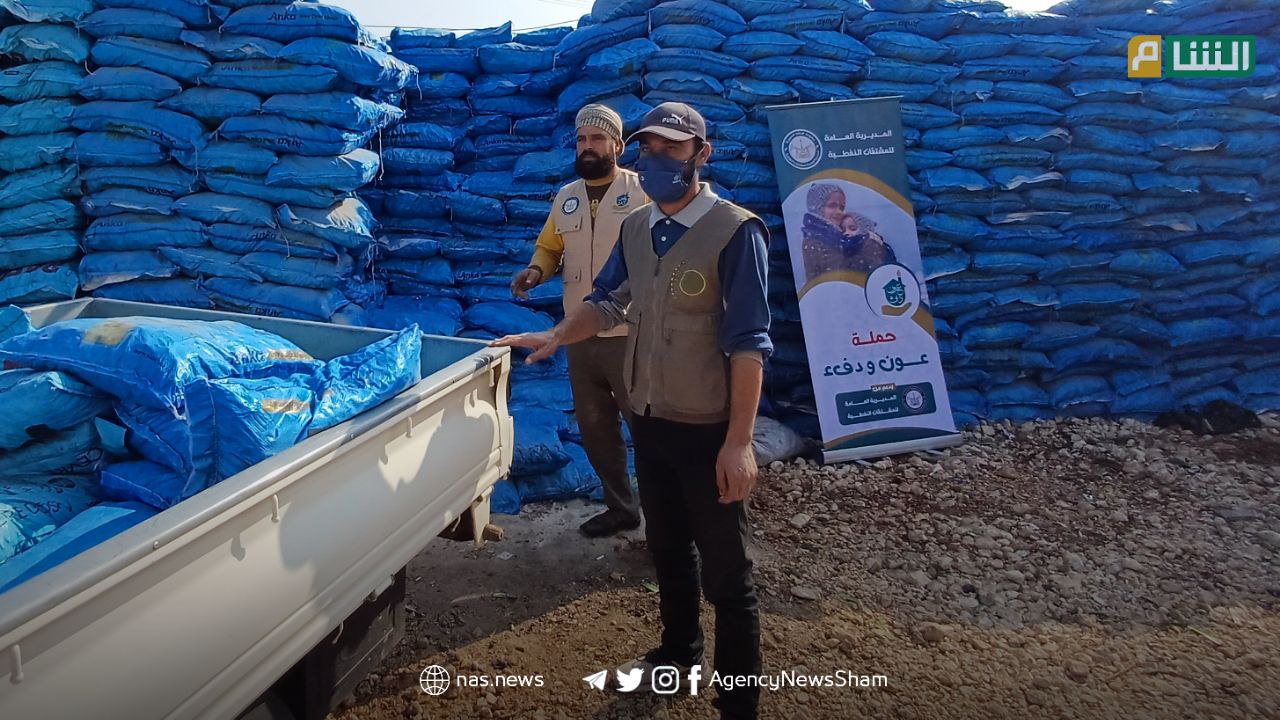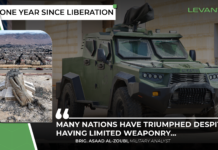
As winter sets in across northern Syria, millions of displaced Syrians face worsening conditions in overcrowded and under-resourced camps. The cold weather brings new challenges for families already grappling with poverty, inadequate shelter, and limited access to essential supplies.
Khalid Al-Talib, 45, lives in a dilapidated, poorly insulated tent with his six children in the Al-Bakri camp, north of Idlib. Facing financial hardship and unemployment, he relies on his daughters’ earnings from sewing baby diapers to meet their basic needs.
Last winter, Khalid’s family received 40 kilograms each of firewood and “bireen”, briquettes made from composted olive pits, from an aid organization – an amount that barely met their needs. This year, no such support has yet arrived. Prices for essential heating materials have soared: a ton of hazelnut shells costs $145, firewood $160, and bireen $140, making it difficult for families like Khalid’s to secure warmth.
For 70-year-old Fadda Al-Aref in the Al-Laith camp near Harbanoush, preparing for winter involves desperate measures. “I collected nylon bags to light them and heat my tent, despite the harm this would cause to my health,” she said. Her tent, which has not had its plastic awning replaced in five years, leaks water despite being covered with blankets last winter.
Mustafa Al-Dibo, another resident of the Harbanoush camp, scavenges for fallen olive branches with his five children to fuel makeshift fires. Earning only 100 Turkish liras ($2.9) a day as a laborer, Mustafa attempts to insulate his tent with blankets that are ineffective against rain and cold.
Local aid organizations and governmental institutions have begun various programs in order to address these issues. Ahmad Al-Sulaiman, Public Relations Manager at the General Directorate of Oil Derivatives, emphasized the urgency of such winter aid projects. The Aid and Warmth Campaign, one such program, implemented by the Syrian Salvation Government (SSG), aims to provide heating materials to approximately 25,000 families across multiple refugee camps.
“The distribution of coal has begun as part of the Aid and Warmth campaign, and we have opened 12 centers in a number of areas near the camps to facilitate its receipt by the beneficiary families,” he said. “We were keen to deliver coal on time to ensure the readiness of families before the expected drop in temperatures in the coming weeks.” Yet for many, these efforts fall short of addressing the full scope of the crisis.
Heavy rainstorms on November 3 exacerbated the already difficult situation, causing floods in northwestern Syria that damaged roads and camps. The Syrian Civil Defense, also known as the White Helmets, responded to the crisis in 10 camps, with roads and 22 tents impacted. Camps such as Al-Joura near Adwan, Al-Huwayjah near Maarat Misrin, and Musaibin and Ghosn Al-Zaytoun in Qabasin, west of Aleppo, were particularly affected. The Syrian Response Coordinators (SRC) team reported damage to 88 tents, housing units, and caravans across 39 camps.
The UN Office for the Coordination of Humanitarian Affairs (OCHA) reports that 5.1 million people live in liberated areas of northwestern Syria, with 4.27 million requiring humanitarian aid. Between January and late October 2024, aid reached only 920,000 people, covering just 27% of those in need. Of the 2.1 million living in camps, a mere 16% – around 310,000 individuals – received aid.
Food insecurity is also severe, with 3.64 million people in need of assistance. Only 17% have received food aid this year. The north is governed by the Turkish-backed Syrian Interim Government (SIG) mostly in northern Aleppo and the predominately Idlib-based SSG, entities that oversee different territories but face common struggles due to ongoing regime and Russian military campaigns.
Despite previous ceasefire agreements guaranteed by Turkey and Russia, bombardment and attacks by Assad, Russia and Iranian militias persist, predominantly targeting SSG-held areas. This continued violence, coupled with a lack of sufficient aid, leaves the displaced in northern Syria increasingly vulnerable as winter advances, worsening their already precarious existence.








